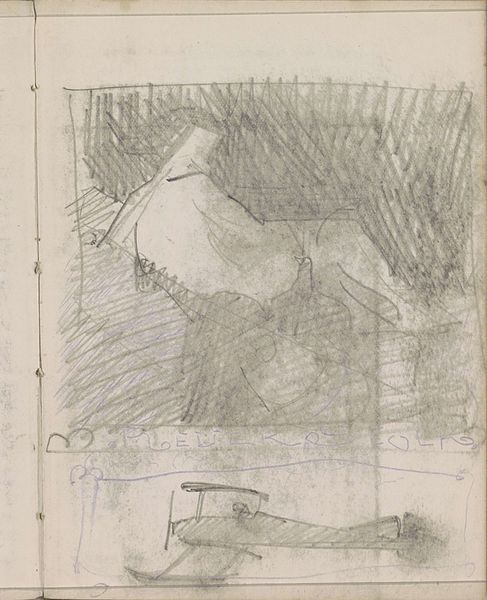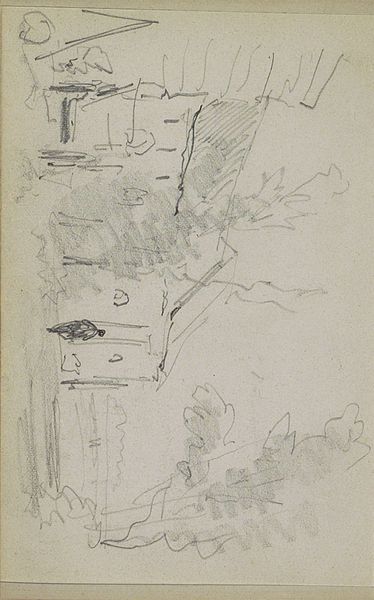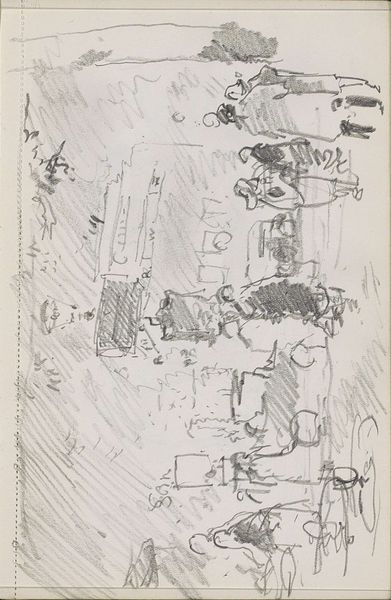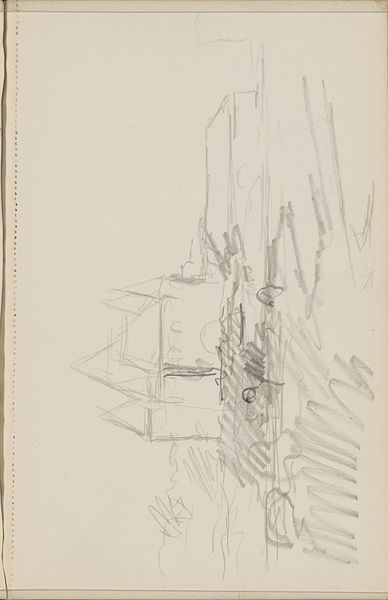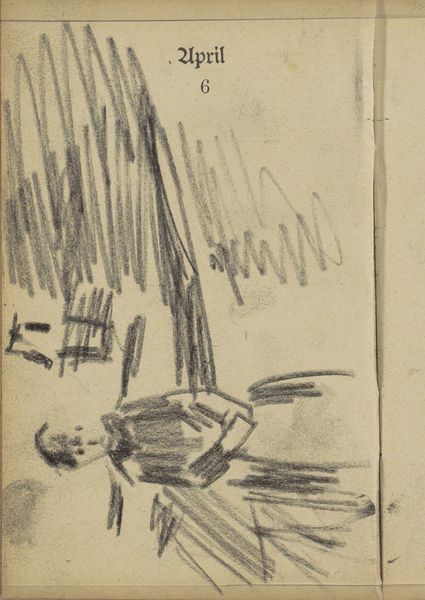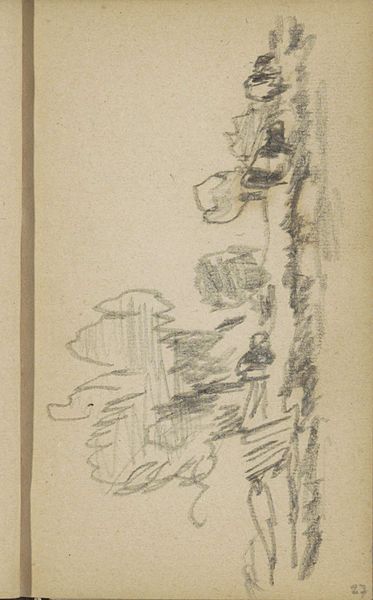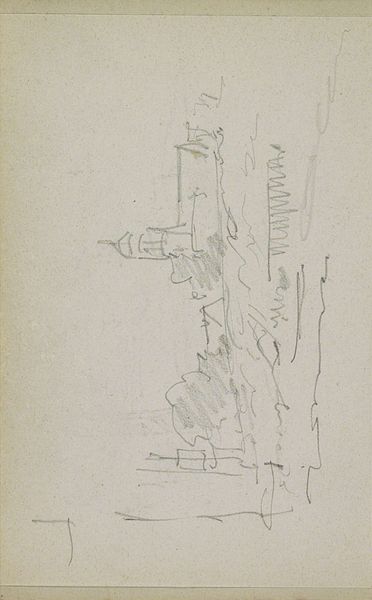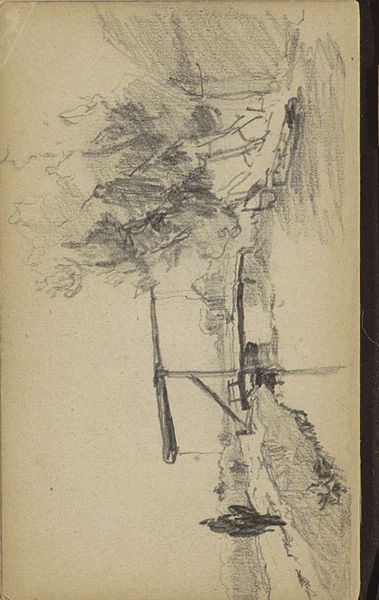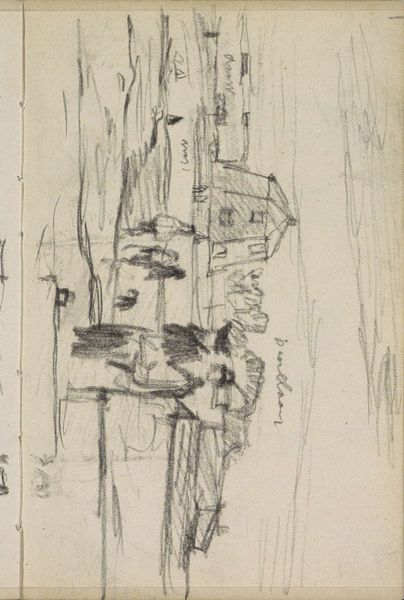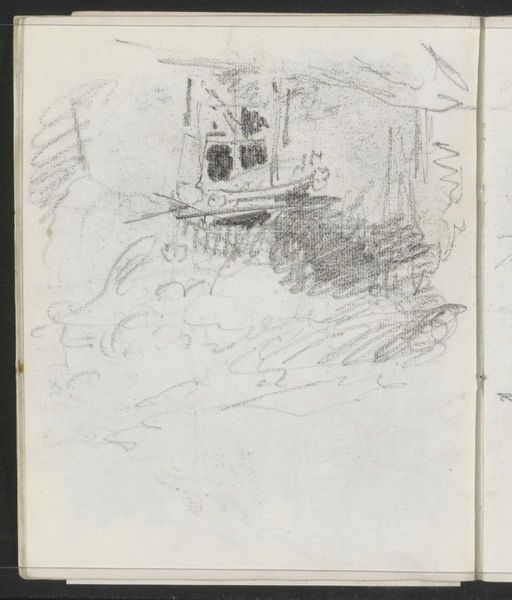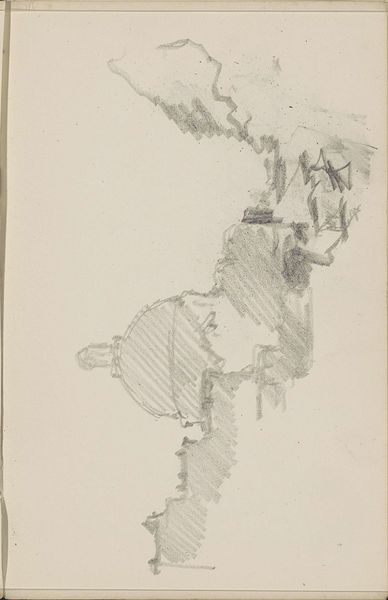
drawing, pencil
#
drawing
#
amateur sketch
#
pen sketch
#
incomplete sketchy
#
landscape
#
personal sketchbook
#
sketchwork
#
ink drawing experimentation
#
pen-ink sketch
#
pencil
#
line
#
sketchbook drawing
#
sketchbook art
#
initial sketch
Copyright: Rijks Museum: Open Domain
Curator: We're standing before Cornelis Vreedenburgh’s “Zeilboot op het water voor een kustlijn,” or "Sailboat on the Water off a Coastline." This sketch, crafted with pencil and ink, is part of the Rijksmuseum's collection and dates sometime between 1890 and 1946. Editor: The immediacy of the piece strikes me first. It's like a fleeting thought, captured quickly. The somber grayscale amplifies the feeling of transience. Curator: The beauty here, in my view, is in that unfinished quality. It exemplifies art-making as a process, less about a polished end than about capturing an essence. We need to see it in the context of artistic movements embracing immediacy—the influence of impressionism moving even beyond painting. What might Vreedenburgh be saying about seeing, knowing, capturing a moment? Editor: Absolutely. I’m wondering, who was this Vreedenburgh speaking to with this work? Its status as a sketchbook drawing and its seemingly unfinished status, position the sketch more intimately than something made for public appreciation. Did the coastal setting suggest themes related to trade, migration, or the Dutch relationship with the sea, at that period? How might ideas of national identity, for instance, be visualized in his public, commissioned pieces versus something so private? Curator: That’s a great point. During this period, the Netherlands saw massive shifts in industry, alongside debates about national character, and a real reassessment of the country's colonial past was only starting. Coastal imagery itself can be fraught, romanticized views often hiding a more complex socio-political reality regarding labor, access, and land ownership. Editor: So this work has interesting relationships, therefore. On the one hand it captures what you were describing, these emergent styles based on immediate sensations; on the other hand, though, its existence, and continued accessibility, suggests an important space for more individual visual impressions of what it meant to live in the world at the time the work was created. Curator: Indeed, these seemingly minor pieces open up valuable conversations. Editor: This sketch really underscores how every artwork is also a record, reflecting, and refracting the times that produced it.
Comments
No comments
Be the first to comment and join the conversation on the ultimate creative platform.
